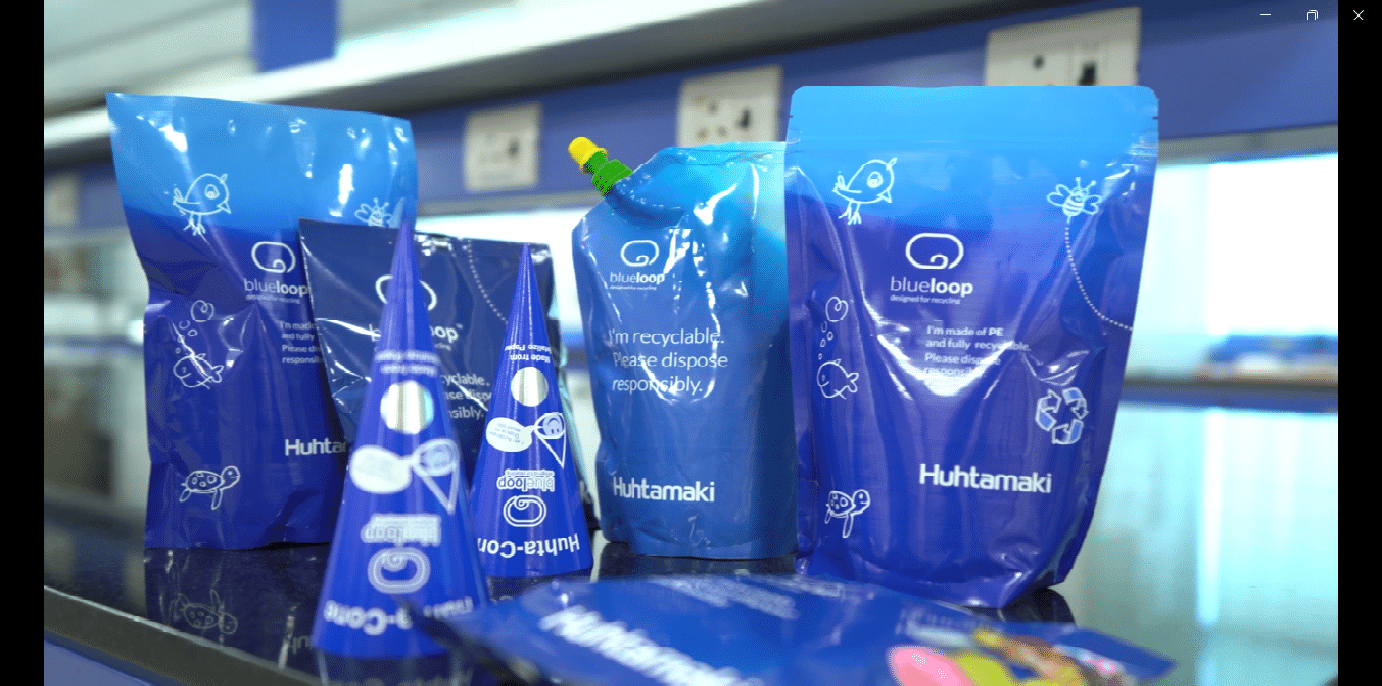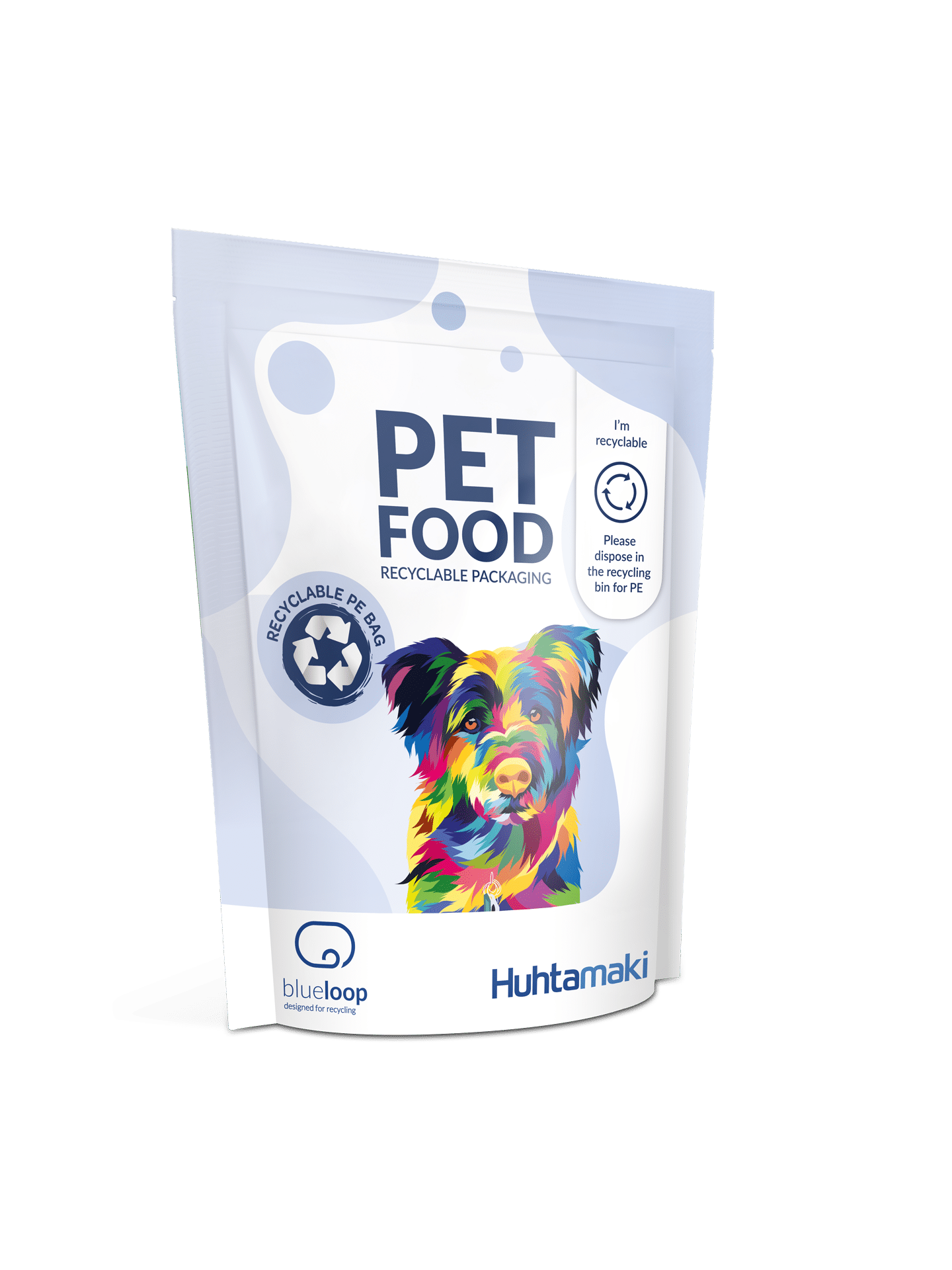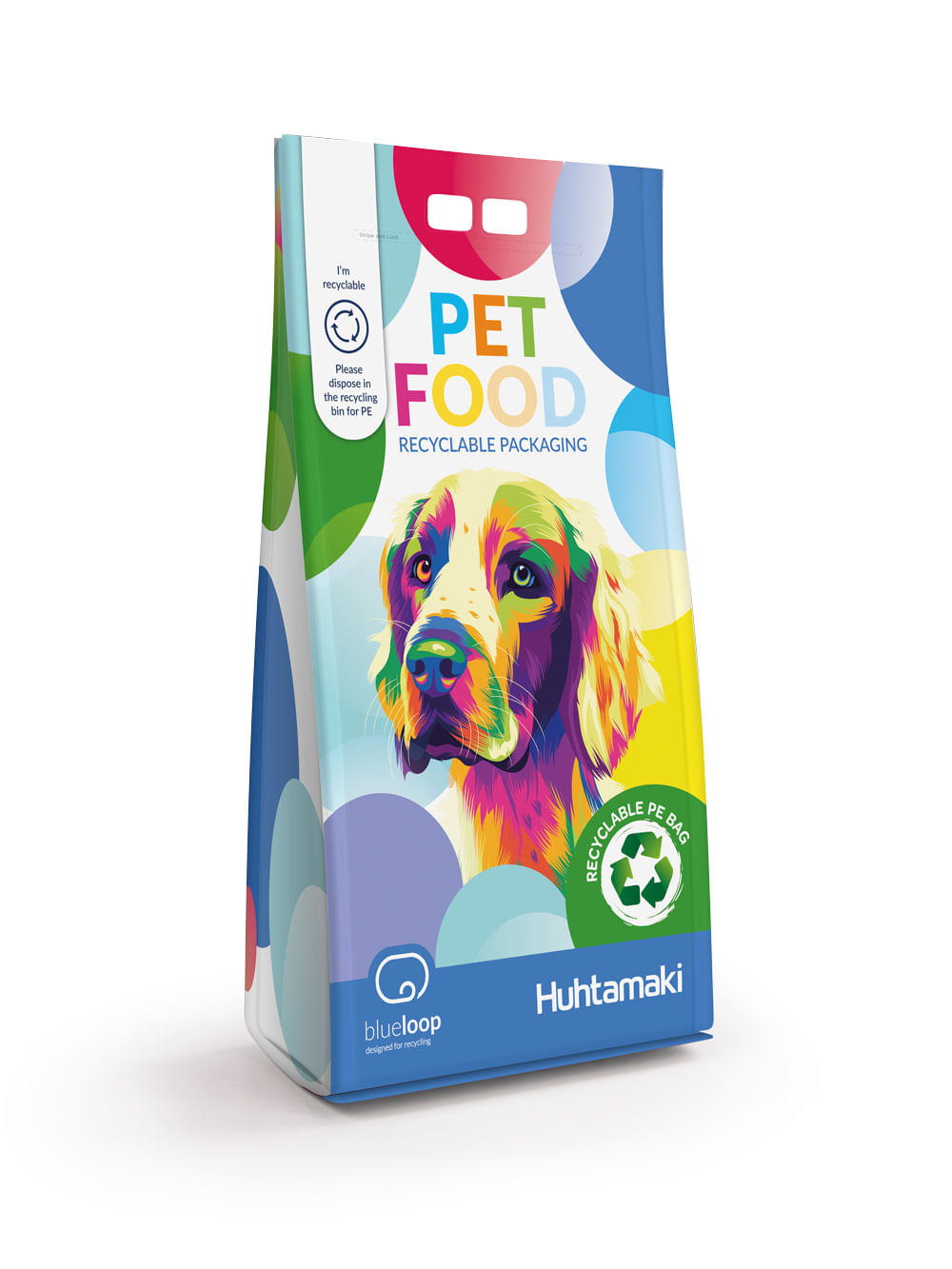India is a priority for Huhtamaki, says Salunkhe
“In the food industry, packaging helps preserve food and prevent waste. It is estimated that 8% of global greenhouse gas emissions are related to food waste,” Dhananjay Salunkhe, managing director, Huhtamaki India tells Rahul Kumar
18 May 2023 | By Rahul Kumar
Rahul Kumar (RK): The paper and packaging industry is currently the fifth largest sector in the Indian economy. How is the packaging industry performing according to you?
Dhananjay Salunkhe (DS): Globally, the packaging industry is progressing towards playing a pivotal role in the implementation of a circular economy and Huhtamaki is at the forefront of this drive.
RK: How so?
DS: In India, Huhtamaki has been working on a range of areas when it comes to sustainability, from manufacturing recyclable solutions to reducing our operational environmental footprint at our manufacturing sites.
RK: What is Huhtamaki's sustainable strategy for India?
DS: Huhtamaki's 2030 sustainability strategy aims to reach carbon neutral production by 2030, while optimising our use of resources, including energy, water and waste. We have several exciting innovations in the pipeline in mono-material flexible structures with PE, PP and paper-based options. We can provide our customers with a wide range of recyclable solutions that minimise material use, without compromising on the safety and performance of the packaging. Products under Blueloop, our enterprise wide sustainable brand, promote a circular economy for packaging with fully recyclable solutions.

RK: Out of downgauging, renewable raw materials, recyclability or circular economy, which one does Huhtamaki practice the most?
DS: When it comes to our products, our number one priority is designing for circularity, and our new innovations in sustainable packaging. Additionally, to ensure we participate in innovating solutions for ramping up the recycling of packaging, we have invested in scalable recycling pilots to address gaps in recent recycling systems. Our goal is to achieve carbon-neutral production for scope 1 and 2 emissions by 2030.
RK: In what way?
DS: To accomplish this, we have various projects underway across our sites that focus on reducing energy consumption and GHG emissions as well as increasing the use of renewable energy sources. At some of our sites, we have installed solar rooftop panels. One of our plants has shifted to renewable biomass for its primary energy needs. Shifting to a cleaner PNG fuel for one of our site’s primary energy needs, has helped reduce the site’s scope 1 emissions by 20% . Overall, we have managed to reduce our absolute scope 1 GHG emissions by 8.9 % this year.
RK: During the recent COP 27, a new standard for sustainability reporting - the ISSB was discussed. From what little we have understood, the ISSB is important for our industry. And how does our industry talk to lobbyists and policy makers at international and local forums?
DS: The International Sustainability Standards Board (ISSB) intends to build on existing content developed by various standard setters to establish a global baseline for sustainability reporting that is centred on the needs of investors, lenders, and other creditors. Alignment of sustainability standards is required to comprehend the true impact of climate change on corporate portfolios. The collaboration between Carbon Disclosure Project (CDP) and International Financial Reporting Standard (IFRS) is one such example, indicative of the fact that such fruitful partnerships help create a positive impact effectively at the macro level.
RK: In what way does sustainability affect equity investments? The Security Exchange Commission recently proposed new rules that would require publicly traded companies to disclose their climate-related risk in a standardised way that would be subject to audit. If adopted, the new rules would impose additional costs on SEC-reporting companies.
DS: As a part of their annual reports, the top 1,000 listed companies in India are required to submit a Business Responsibility Report (BRK) to the stock exchanges. The BRK should describe the listed companies' Environmental, Social, and Governance (ESG) initiatives in the format specified by the Securities and Exchange Board of India (SEBI). Huhtamaki India will also be publishing its first BRSR report integrated with the FY2022 annual report. Mandates spur action, as seen in Australia with the introduction of the National Greenhouse and Energy Reporting (NGER) Act in 2007, which now includes hundreds of registrants reporting on their energy production, consumption, and GHG emissions. As the world gears up to mitigate the effects of a looming climate crisis, companies are gradually putting ESG at the heart of their business strategy.
RK This means, transparency on performance in sustainability will be a standard expectation of all investors in the near future. Your view?
DS: AT Huhtamaki, we welcome this development, as we accelerate efforts towards a net zero future.
RK: What is the role of packaging innovation: new product formats; new offerings - paneer, craft beer; eco-friendly, increased shelf life - Modified Atmosphere Packaging (MAP)?
DS: Consumers and businesses are increasingly demanding sustainable packaging options, driving the need for innovative solutions. With a growing awareness of environmental and resource efficiency issues, the industry is actively seeking to develop and implement more sustainable packaging solutions. We believe that the path towards a more sustainable standard of living, without compromising on the benefits that safe and accessible food brings to society, is to focus our R&D efforts on recyclable, high performance mono-material solutions. This way, we ensure that our packaging is fit with existing and emerging recycling streams, supporting a circular economy.
RK: How is the balance between innovation and sustainability achieved?
DS: At Huhtamaki, we believe that innovation and sustainability should always go hand-in-hand, there is no other alternative. Packaging related innovations bring value through source reduction, providing recyclable options and having biodegradable and compostable solutions. In addition to the recyclability of packaging, it is important to design it for maximum resource efficiency, ensuring that the choice of packaging type is the best fit-for-purpose for each application.
RK: And how is Huhtamaki achieving this?
DS: Huhtamaki aims to be the first choice in sustainable packaging solutions. To achieve our ambition, we launched our 2030 strategy centered around transitioning to a circular economy and taking climate action. We are currently focusing on expanding our mono-material packaging solutions that are aligned with our net zero ambitions. It will help lower the complexity of the packaging process which will also boost the yield in the current recycling processes. We want to deliver the same package and barrier performance, while also making it accessible and affordable. As a global player, we have set certain industry standards and always focus efforts towards ensuring that there is no trade-off between quality and sustainability.
RK: For example, how do UV ink technologies stand the test of sustainability, recovery and reuse.
DS: Huhtamaki rarely utilises UV curable inks in flexible packaging except a few applications in Istanbul. The use of UV inks is more pertinent in our PS label applications.
RK: Which sustainable metrics should brands consider and follow to increase sales and market share when they look at packaging?
DS: Our global brand partners in the FMCG space have set a target to make all their packaging 100% recyclable, compostable, or reusable by either 2025 or 2030. We endorse their aspirations and are equipped with our mono-material innovations to help our clients in achieving these goals. It is also important to optimise packaging design for resource efficiency, reduce packaging weight and volume, implement closed-loop systems to increase recycling rates, and reduce carbon footprint across the supply chain. It is equally crucial for brands to consistently communicate their sustainability endeavours and successes to consumers to heighten consciousness and encourage responsible buying choices.
RK: There are various frameworks and standards available in the market to disclose sustainability related data. Which ones do you follow?
DS: At Huhtamaki, we prioritise compliance with universally accepted frameworks and standards, including GRI, CDP, and EcoVadis - the world's most trusted business sustainability index. We are proud to have received a gold medal from EcoVadis for our sustainability performance over the past two years. This recognition acknowledges our commitment to sustainability across our global operations and our progress towards achieving our 2030 sustainability goals. We regularly evaluate and improve upon the gaps identified in our value chain, further enhancing our ESG commitments.
RK: Any developments in biopolymer film that we should be aware of?
DS: At Huhtamaki, we are always looking for ways to innovate and improve our products. Currently, we are in the process of conducting trials and approaching customers for feedback. While it is still in the development stage, we are excited about the potential possibilities and look forward to sharing more updates in the future.
RK: One flexible packaging player in India has announced new mono-material polypropylene packaging concepts for minced meat that omit bottom trays, thus apparently achieving material savings of up to 60%. What are Huhtamaki's specific offerings for India?
DS: With regards to such applications, most of Huhtamaki’s solutions are based on mono PE. However, we do not have packaging for minced meat from India. We are focusing on providing customers sustainable packaging solutions across fibre, paperboard and flexibles while for VFFS packs, Huhtamaki can also offer mono PE barrier solutions with required barriers. Additionally, we are also focusing on providing paper-based innovations in the flexible packaging space. We offer solutions in the labels space and have built offerings across all modern technologies, such as shrink sleeves, pressure-sensitive labels, metalized labels, heat transfer, in-mold, and wrap-around labels. Huhtamaki is a global leader in the packaging space and with a large production footprint globally, inclusive of India and is equipped with the key technologies to offer a wide range of products, designed to be purpose-fit as per customer needs.


Sustainability, according to Dhananjay Salunkhe
Sustainability could be downgauging, renewable raw materials, recyclability or circular economy.
Huhtamaki India’s sustainability goal incorporates the three ESG pillars of Environment, Social, and Governance, as well as the business ethics.
Our 2030 sustainability ambitions are centred around transitioning to a circular economy and taking climate action, while also considering other environmental and social aspects of sustainability. We incorporate sustainability into everything we do and strive to be financially, environmentally, and socially responsible in our operations.
At Huhtamaki, sustainability forms the core of our overall business strategy. For our manufacturing sites in India, we have undertaken a slew of sustainable measures, for example Huhtamaki has managed to increase its renewable energy use by 5% in 2022 and aims to achieve carbon neutral production by 2030.
Additionally, we are also focusing on energy consumption reduction at source through use of newer technologies, recovery of waste energy as well as optimising processes.
Huhtamaki’s commitment to water stewardship runs deep, and we have reinforced appropriate wastewater management plans across ten plants in India. As part of our ‘Zero Liquid Discharge’ initiative, at some of our sites, we have implemented a mechanical vapour recompression evaporator to treat wastewater at low power consumption as compared to a conventional Effluent Treatment Plant (ETP). Through this program, we have successfully managed to reduce our total water consumption by 14% in 2022, alone as compared to the previous year. Also, at some sites, we have installed centralised wastewater treatment systems to purify industrial water and repurpose the same for agriculture and irrigation use.
Huhtamaki’s personalisation campaign of food packaging in India
Huhtamaki has a track record of producing successful packaging for major FMCG brands such as Coke and Nestle's Kitkat. For example, the company partnered with Coca-Cola to design over 3,00,000 bespoke wrap-around labels to support the Share a Coke campaign in India.
This was the most complex brand interaction campaign supported through packaging, requiring the proofing of thousands of artwork designs. The labels were personalised with distinct relationships in 12 regional languages, enhancing shareability and promoting a deeper connection with consumers.
Additionally, in a category- first innovation, the group delivered 12 million unique packs using a variable data printing technique for Nestle Kitkat’s limited-edition packs called #LoveBreak to celebrate the month of February as ‘Season of Love’.
As Dhananjay Salunkhe says, “It was founded on the idea that each relationship is unique, and so should be the way to communicate love. Both these campaigns are perfect examples of how customised packaging leads to memorable consumer experiences as well as increased brand share of voice and memory.”


